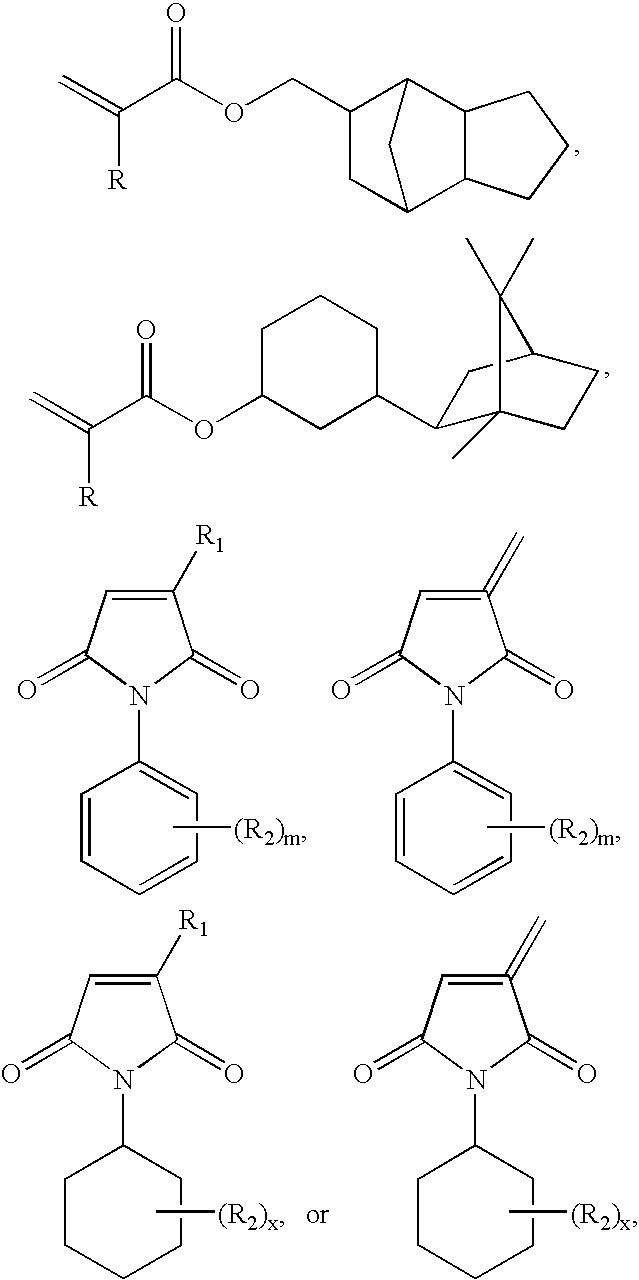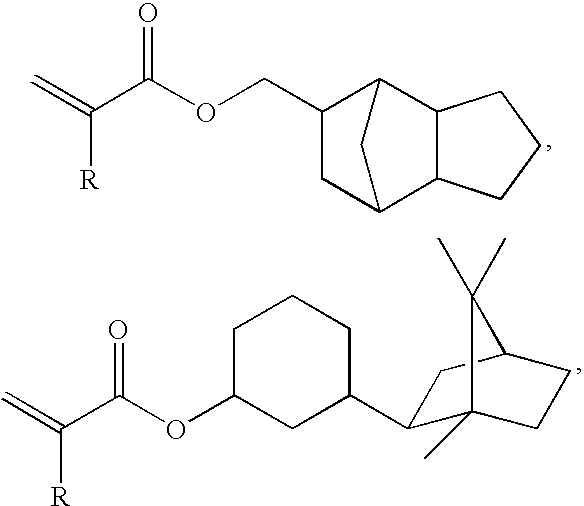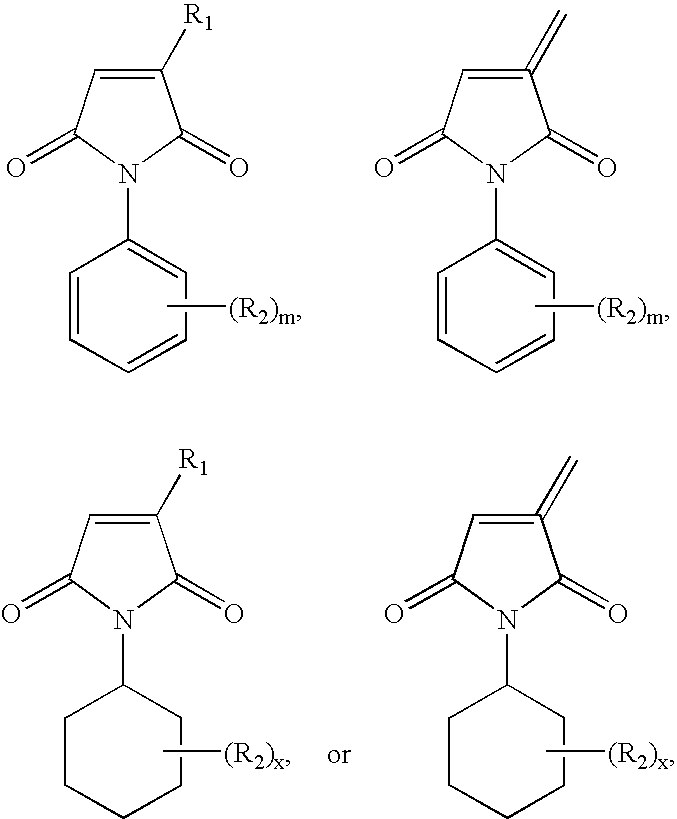Mono-functional monomers and methods for use thereof
a monofunctional monomer and monofunctional technology, applied in the direction of film/foil adhesives, tyre parts, non-conductive materials with dispersed conductive materials, etc., can solve the problems of low cure temperature, low cure temperature, and low cure temperature of monofunctional monomers, so as to achieve good cure parameters and reduce the effect of weight loss and high cure temperatur
- Summary
- Abstract
- Description
- Claims
- Application Information
AI Technical Summary
Benefits of technology
Problems solved by technology
Method used
Image
Examples
example 1
3-Methoxyphenylmaleimide
[0054]Toluene (100 mL), triethylamine (10 g), methanesulfonic acid (15 g) were placed into a 500 ml, single-neck flask. Maleic anhydride (21.0 g, 214 millimoles) was dissolved into this mixture. This mixture was stirred magnetically at room temperature and m-anisidine (24.67 g, 200 millimoles) was then added drop-wise over a twenty minute period. A Dean-Stark trap and condenser were attached and the mixture was refluxed for three hours. A total of 3.7 ml of water was collected in the trap. The mixture was cooled to room temperature and the upper (toluene) phase was decanted off. The lower phase was extracted with 6×70 ml portions of fresh toluene. The collected toluene phase was passed over 27 grams of silica gel. The toluene was removed on a rotary evaporator to yield 27.3 g (67% of theory) of a clear yellow liquid. The product crystallized to a solid upon standing at room temperature. The solid melted at 75-76.5° C.
example 2
2,4,6-Tribromophenylmaleimide
[0055]Into a 500 ml, single neck flask was placed 49.47 g (150 mmol) 2,4,6-tribromoaniline; 16.67 g (170 mmol) maleic anhydride; toluene (200 mL); and methanesulfonic acid (3.0 g). The 2,4,6-tribromaniline was only slightly soluble in this mixture upon stirring at room temperature. The mix was heated to reflux with a Dean-Stark trap and condenser attached. The mixture became a light red solution at reflux. The mixture was refluxed for 2.5 hours and 2.8 ml of water was collected in the trap. The residual acid was neutralized using ten grams sodium bicarbonate and two grams water. The mix was dried with six grams anhydrous magnesium sulfate and then passed over fifteen grams silica gel. The final product was recovered as a light yellow solid after removal of the toluene. It weighed 60.9 grams (99.0% of theory) and melted at 140-143.2° C.
example 3
2,6-Diethylphenylmaleimide
[0056]Twenty-one grams (214 mmol) maleic anhydride, 2.14 grams methanesulfonic acid and toluene (96 mL) was placed in a single-neck, 500 ml flask. The mix was stirred magnetically and 29.8 grams (200 mmol) 2,6-diethylaniline was dripped in over ten minutes. The amic acid that formed stayed in solution. The mix was refluxed with a Dean-Stark trap and condenser attached for 2.5 hours. The water collected was equivalent to theory (3.6 ml). The toluene phase was passed over 33 grams silica gel. The toluene was removed to yield 45.6 g (99.6% of theory) of a light pink solid. It melted at 72-74° C.
PUM
| Property | Measurement | Unit |
|---|---|---|
| Temperature | aaaaa | aaaaa |
| Temperature | aaaaa | aaaaa |
| Temperature | aaaaa | aaaaa |
Abstract
Description
Claims
Application Information
 Login to View More
Login to View More - R&D
- Intellectual Property
- Life Sciences
- Materials
- Tech Scout
- Unparalleled Data Quality
- Higher Quality Content
- 60% Fewer Hallucinations
Browse by: Latest US Patents, China's latest patents, Technical Efficacy Thesaurus, Application Domain, Technology Topic, Popular Technical Reports.
© 2025 PatSnap. All rights reserved.Legal|Privacy policy|Modern Slavery Act Transparency Statement|Sitemap|About US| Contact US: help@patsnap.com



